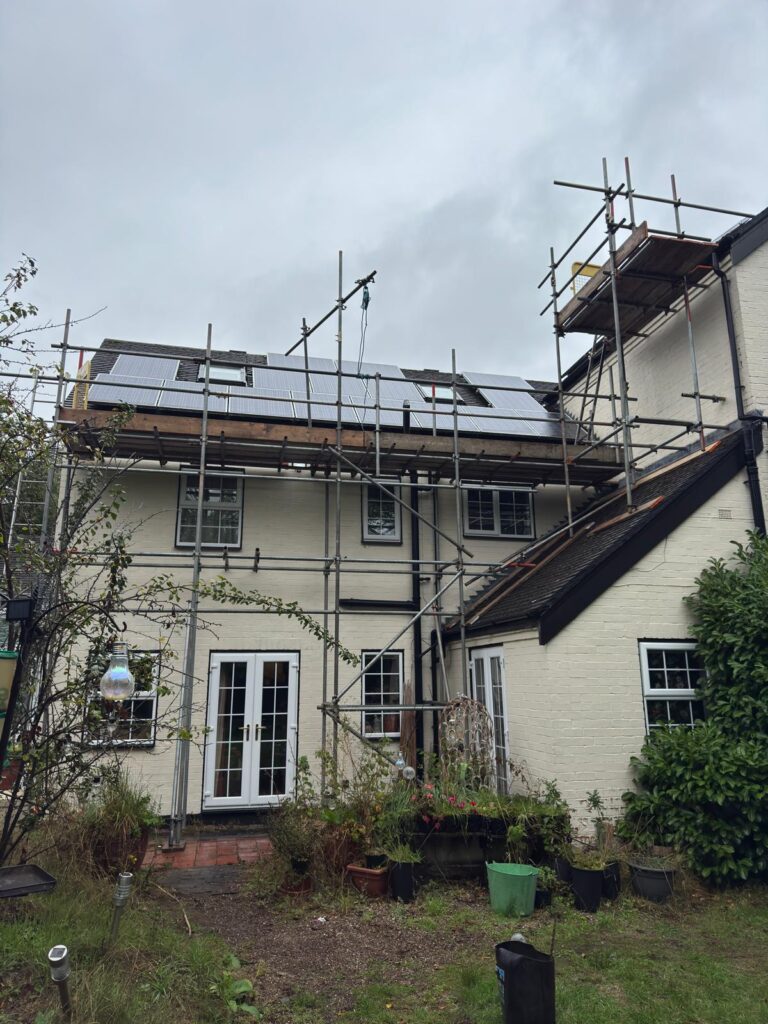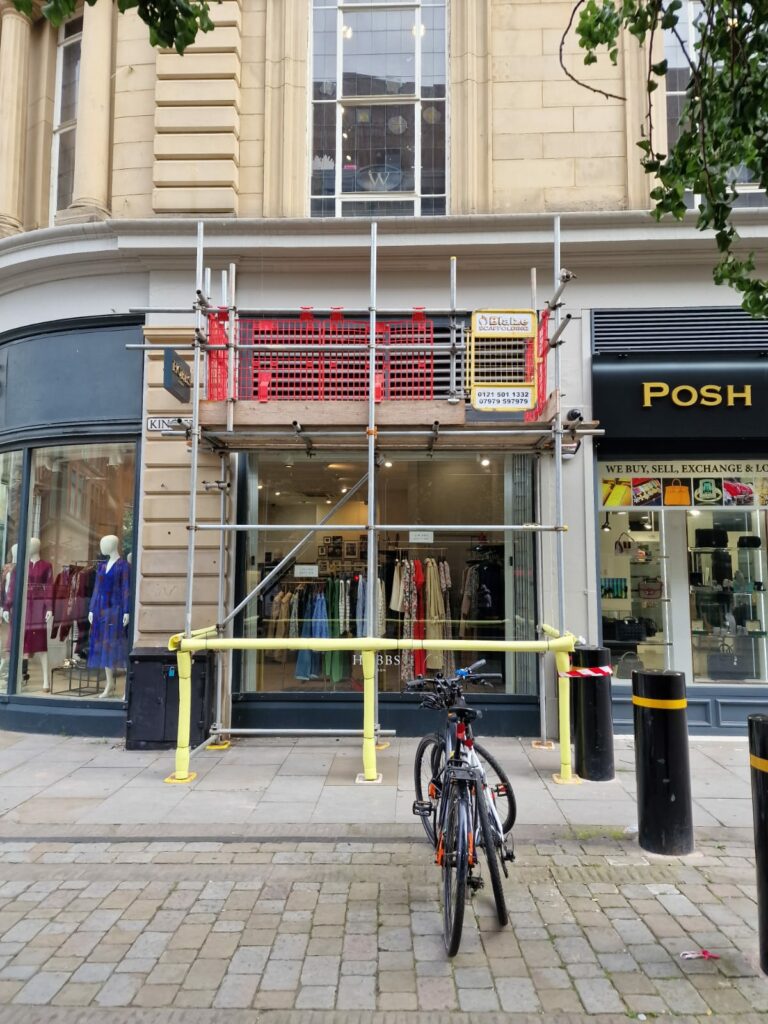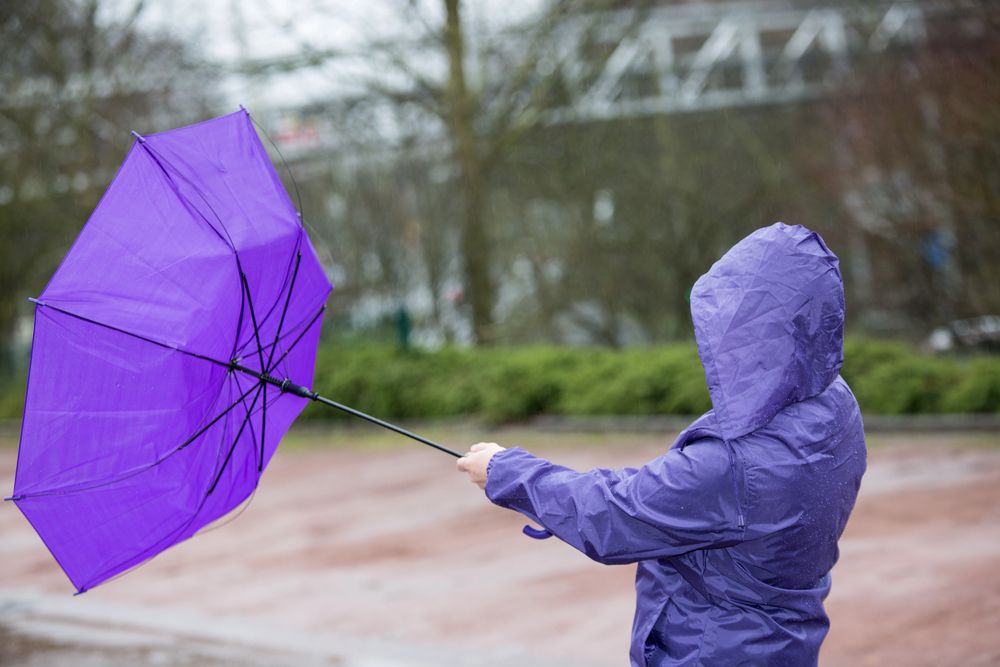As the weather shifts into autumn and winter, construction projects across Birmingham, Solihull and the West Midlands face an added layer of complexity. Wind, rain, frost, and shorter daylight hours all present safety and scheduling challenges—especially when working at height.
For scaffolding contractors, site managers, and homeowners planning exterior work during colder months, understanding how to manage these conditions is essential. At Blaize Scaffolding, we provide robust, weather-resistant scaffolding systems and expert guidance to help our clients maintain safety and productivity year-round.
In this blog, we explain how bad weather affects scaffolded sites, what preventative measures are available, and why hiring an experienced scaffolding company makes all the difference.
The Risks of Working with Scaffolding in Bad Weather
High Winds and Storms
Wind is one of the biggest threats to scaffold stability. Gusts can dislodge poorly secured components or shift unsupported systems. Sites with incomplete or temporary structures are especially vulnerable.
Rain and Slippery Surfaces
Wet platforms increase the risk of slips and falls. Rain can also affect material integrity and make access ladders or boards unsafe.
Snow, Ice and Frost
Icy conditions make walking and working at height extremely dangerous. Ice accumulation on scaffold poles, boards, or ladders can cause loss of balance or structural stress.
Reduced Visibility and Shorter Days
Fog, darkness, and poor lighting reduce visibility, making safe navigation and operation more difficult—particularly on sites with public access.

How Blaize Scaffolding Prepares for Autumn & Winter Conditions
At Blaize Scaffolding, we proactively prepare our systems to withstand Birmingham’s seasonal weather. This includes:
Wind Bracing and Anchoring
We reinforce scaffolding with additional ties, anchors, and bracing to help withstand gusty conditions. Where exposure is high—such as rooftops or open commercial sites—we increase support density.
Scaffold Sheeting and Netting
We use waterproof scaffold sheeting to shield sites from rain, helping protect materials and internal works. In areas with public access, netting also helps contain debris during wind events.
Anti-Slip Boards and Platform Checks
Anti-slip scaffold boards and regular safety checks reduce the risk of slipping in damp or frosty conditions. Our teams inspect platforms daily when frost or rain is forecast.
Temporary Roofing Solutions
For projects at risk of water ingress—like loft conversions or full roof replacements—we offer shrink-wrapped temporary roofs. These allow work to continue through rain and snow.
Out-of-Hours Monitoring
During high-wind warnings or weather alerts, our team checks scaffold stability and provides emergency response. This is especially important on high-profile or public-facing sites.

Seasonal Scaffolding Tips for Contractors and Site Managers
Plan Ahead
If you’re planning work between October and March, consult your scaffolder early. Weather-proof scaffolding may require extra time for setup and permissions.
Include Weather Buffers in Your Timeline
Allow for potential delays during storm warnings or snow. A few days’ buffer can help keep your project on schedule overall.
Communicate with All Site Operatives
Ensure all trades understand how to use weather-adapted scaffolds safely. This includes warning signage, platform maintenance, and avoiding use in severe conditions.
Schedule Inspections More Frequently
Rain and frost can change scaffold safety overnight. Daily visual inspections and weekly formal checks are especially important in winter.
Examples from Recent Cold-Weather Projects
- Solihull Retail Unit Refurbishment: We installed reinforced scaffolding with full shrink wrap roofing, allowing roofers to complete work in sub-zero conditions without delays.
- Moseley Home Loft Conversion: A temporary roof was fitted over the exposed roof frame to protect new joists and insulation from heavy rain.
- City Centre Office Cladding Repair: With high winds forecast, we added extra bracing and sheeting, and carried out twice-weekly safety inspections.
Each of these projects continued on schedule thanks to pre-planned safety features and real-time monitoring.
FAQs – Scaffolding and Bad Weather in Birmingham & Solihull
Can scaffolding be used during storms?
Scaffolding should not be used in high winds unless specifically reinforced. We advise clients when it’s unsafe to operate and inspect after major weather events.
Do I need a temporary roof in winter?
If your site will be exposed for several days or weeks, especially during roofing work, a temporary roof can prevent costly water damage and work delays.
Will bad weather affect scaffold hire costs?
Not usually. Our hire prices are stable year-round, though additional features like roofing or bracing may be added for safety.
What happens if my scaffold is damaged in a storm?
We provide emergency callouts and repairs. Our priority is stabilising the structure and keeping your site safe.
How do you secure scaffolding in windy areas?
We use extra ties, anchors, and proprietary bracing systems, particularly on rooftops or exposed elevations.
Conclusion: Winter-Proof Your Scaffold with Blaize Scaffolding
Autumn and winter bring added challenges to every construction site—but with the right preparation, they don’t have to cause delays or compromise safety. Blaize Scaffolding offers proven solutions for weatherproof scaffold hire across Birmingham, Solihull and the West Midlands.
From braced support structures and anti-slip platforms to temporary roofs and site inspections, we’ll help you maintain progress through the toughest weather.
We deliver fast turnaround, competitive quotes, and full safety support from setup to takedown.
To discuss your needs and learn more about our services, call Blaize Scaffolding at 0121 270 7868 or 07979 597 979.

